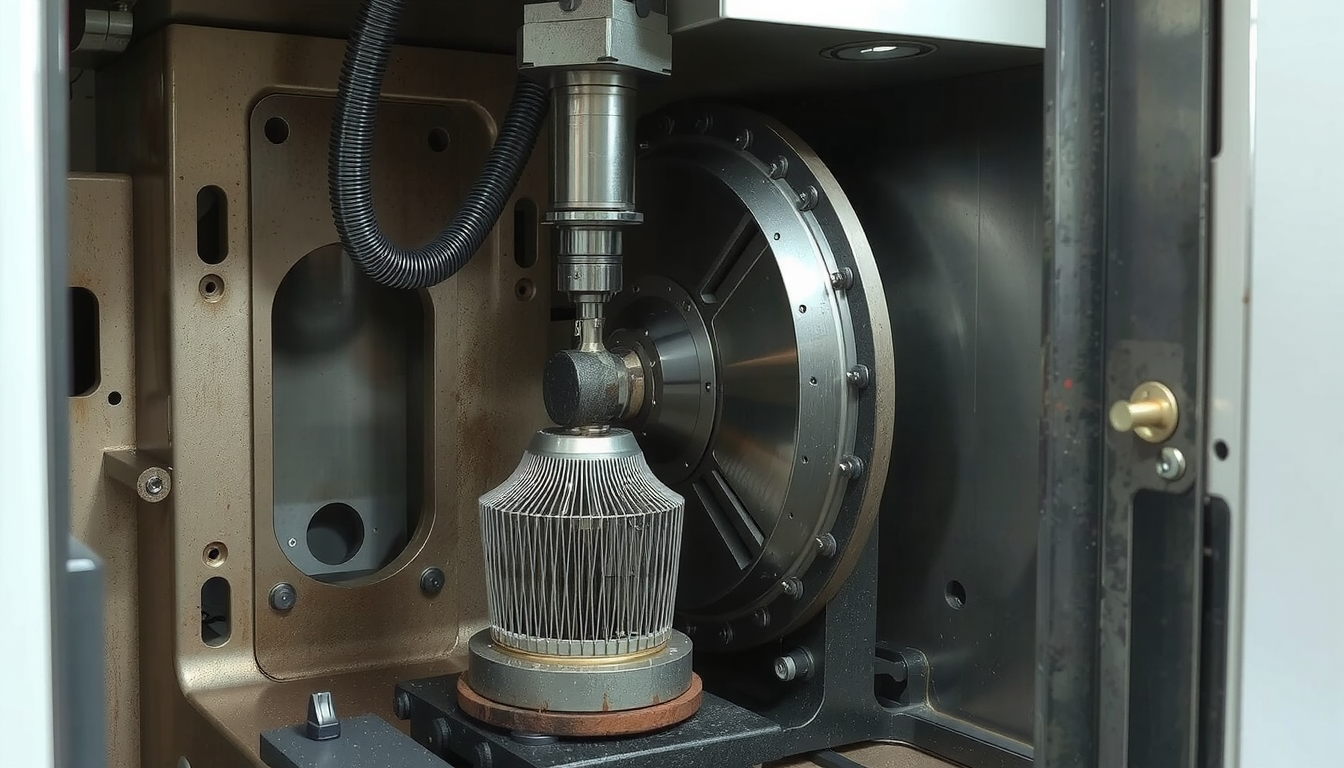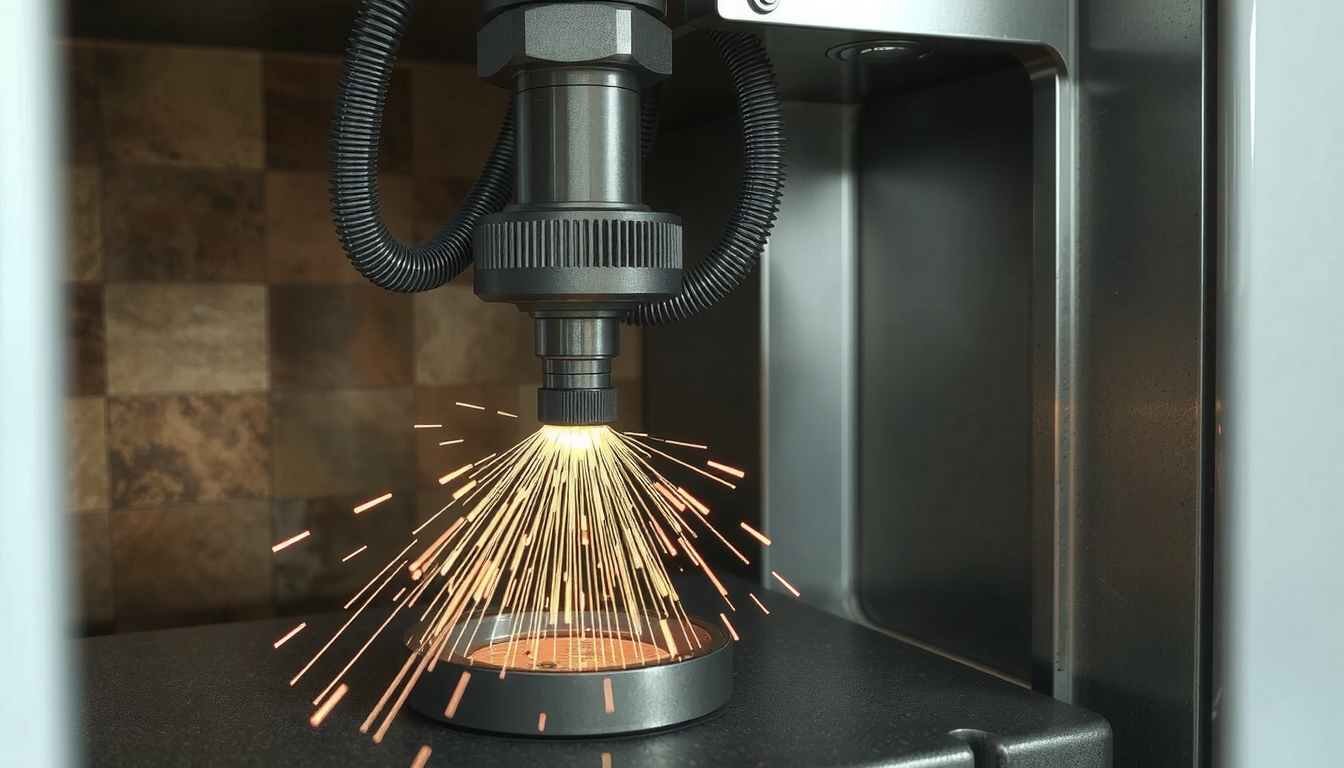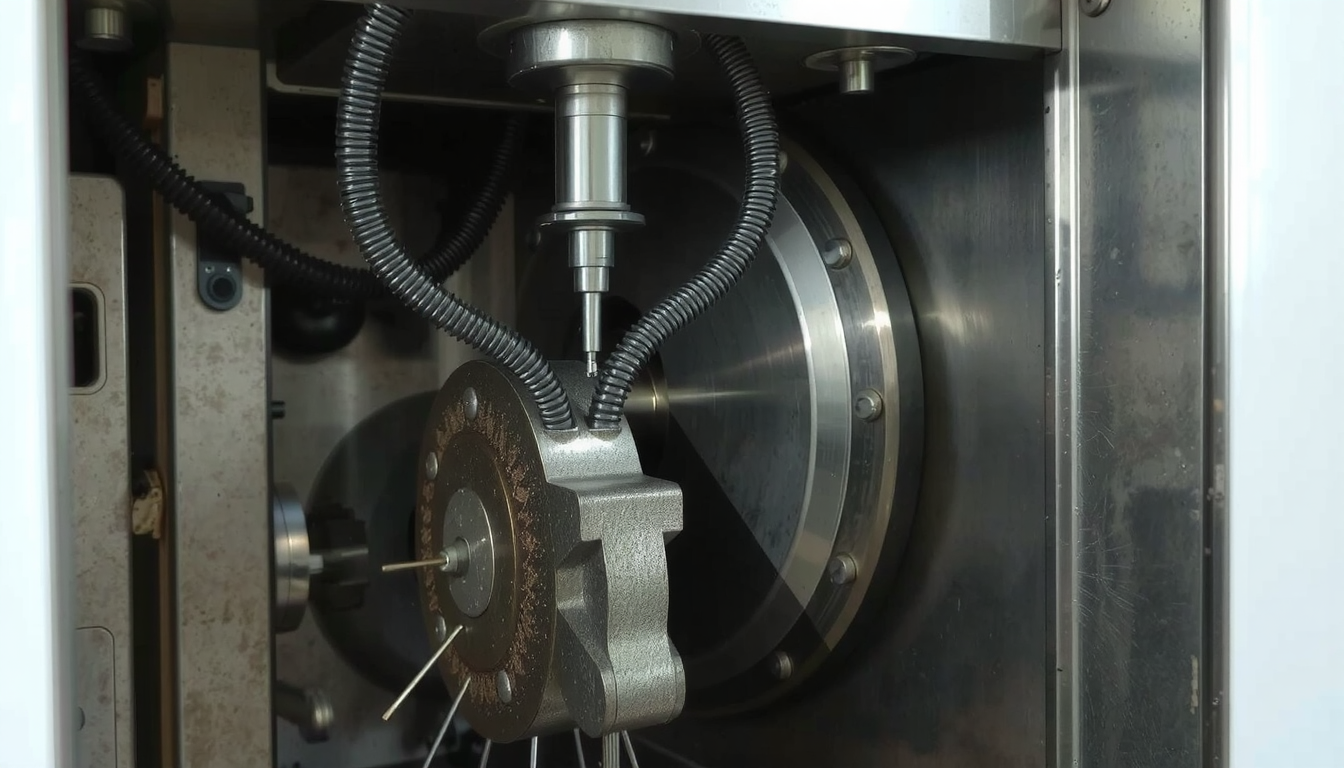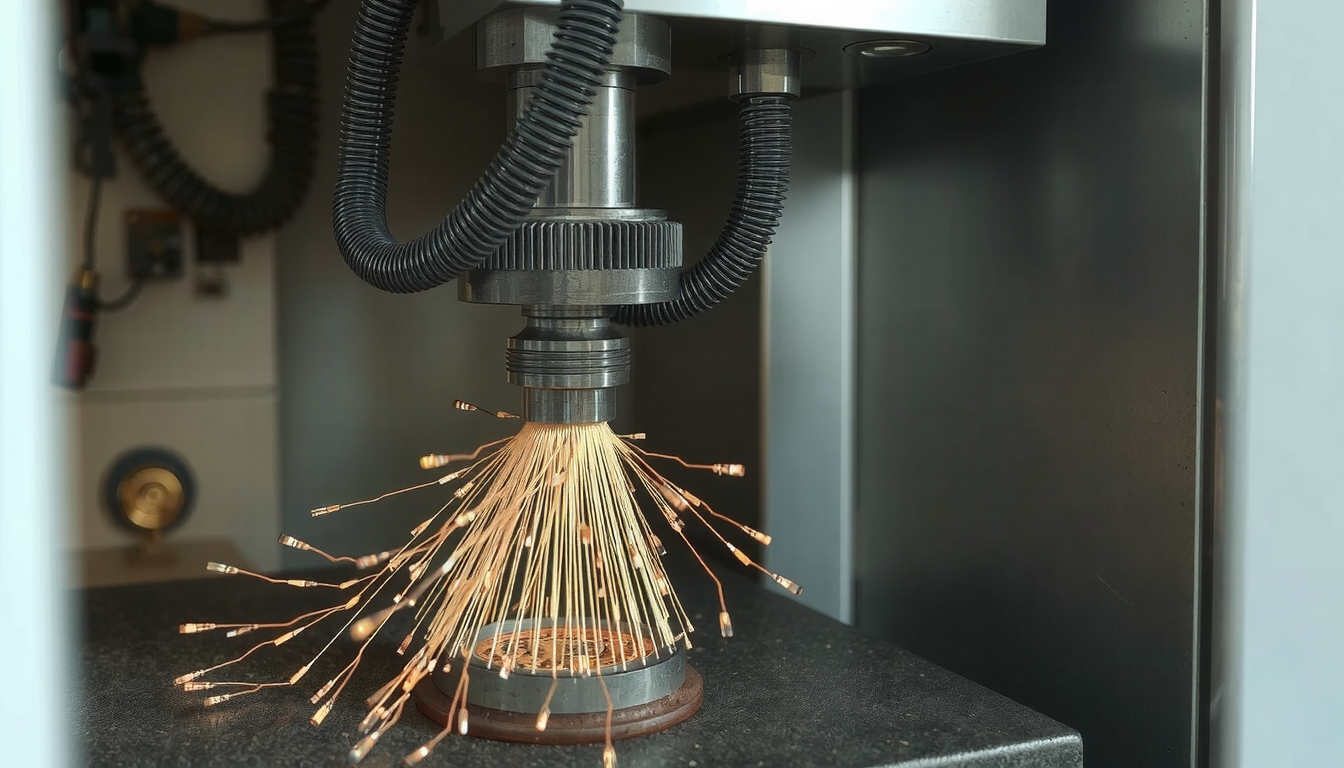What is CNC turning? Simply put, it’s a way to make parts using computer-controlled machines. The process creates round or tube-shaped parts. A bar of material spins very fast while a cutting tool removes material to shape the final part. This is called a subtractive process because it takes away material to get the shape you want.

This guide will teach you everything about CNC turning. We will cover how it works and the steps from design to making parts. We’ll also look at key operations. We’ll compare it to CNC milling, share design tips for better results, and explore how it’s used in the real world.
The Basic Idea Behind CNC Turning
To understand what is CNC turning, think of a pottery wheel, but for metal or plastic. The main idea is very similar. A block of material, called the workpiece or bar stock, is held and spun fast. A still cutting tool is then moved against the spinning workpiece to cut away material.
This lets you create precise round features. A computer controls the process. It reads a set of instructions to control how the tool moves. This makes CNC turning a highly precise machining process that can make thousands of identical parts.
A CNC lathe, or turning center, has several key parts working together:
- Spindle & Chuck: The spindle is the part that rotates. The chuck is a special clamp attached to the spindle. It holds the workpiece securely while it spins.
- Turret: This part holds many different cutting tools. The machine can switch between these tools automatically. It can do different cuts without stopping.
- Cutting Tools: These are the tools that do the actual cutting. They come in many shapes and sizes. Some are inserts for shaping the outside. Others are boring bars for hollowing out the inside.
- Contrôleur : This is the computer “brain” of the machine. It reads the program code. It directs the movements of the turret, tools, and spindle with great accuracy.
The Turning Process: Design to Part
Understanding the CNC turning process from start to finish shows how an idea becomes a real object. This workflow is important for designers, engineers, and project managers to plan well. Here is a practical look at each stage.

Step 1: CAD Design
The journey starts with a 3D model. Using Computer-Aided Design (CAD) software, an engineer or designer creates a detailed digital blueprint. This shows the final part. This model includes all the needed dimensions, shapes, and features.
Step 2: CAM Programming
Next, the CAD model goes into Computer-Aided Manufacturing (CAM) software. The CAM software helps a programmer decide the best way to machine the part. This includes picking the right tools. It also means setting the cutting speeds and defining the tool’s path. The software then changes these instructions into a language the CNC machine understands. This is called G-code. G-code is a series of commands. It tells the machine exactly where to move, how fast to go, and when to turn on coolant.
Step 3: Machine Setup
A skilled machinist then prepares the CNC lathe. This is a critical hands-on step. The machinist securely fastens the raw material (bar stock) into the chuck. They make sure it is perfectly centered. If it’s not aligned, the part will be wrong. They also load all the needed cutting tools into the machine’s turret. Finally, they must do a crucial task called tool offsetting. This means carefully measuring the exact position of each tool tip. They measure relative to the machine’s zero point. This ensures every cut is made at the precise location defined in the program.
Step 4: Machining Execution
With the setup complete, the operator runs the program. The machine’s doors are closed for safety. The process begins. The spindle spins the workpiece at thousands of RPM. The turret moves the cutting tools into place to start removing material. During this process, a liquid called coolant is often sprayed onto the cutting area. This coolant keeps the tool and workpiece from getting too hot. It washes away small chips of material. It also improves the final surface finish. The machine follows the G-code instructions perfectly. It does each operation automatically.
Step 5: Quality Control & Finishing
After the machine finishes its cycle, the completed part is removed. It is not yet ready for use. A quality inspector carefully measures the part. They use precise tools like calipers and micrometers. They check that all dimensions match the original CAD model. They make sure everything is within the specified tolerances. If the part passes inspection, it may go through finishing processes. These include deburring to remove sharp edges, polishing for a smoother surface, or anodizing for protection.
Common CNC Turning Operations
CNC turning uses several basic cutting techniques to create complex shapes. Understanding these operations helps you see how different features on a part are made.
- Facing: This operation creates a flat, smooth surface on the end of the workpiece. It is often the first cut done to establish a clean reference point.
- Turning (OD Turning): This is the most common operation. The tool moves along the side of the workpiece. It reduces its outer diameter (OD) to a specific size.
- Boring (ID Turning): Boring is the opposite of turning. It uses a special tool called a boring bar. This enlarges an existing hole or creates internal features inside the part.
- Grooving/Parting: A grooving tool plunges into the workpiece. It creates a narrow channel of a specific depth. A special type of grooving, called parting, is used to cut the finished part completely off the original bar stock.
- Threading: This operation cuts spiral threads on the outside or inside of a part. This allows it to work as a screw or bolt.
- Knurling: This process uses a special tool to create a textured, crisscross pattern on the surface of the part. This pattern is often added to knobs and handles to provide a better grip.

CNC Turning vs. CNC Milling
A common point of confusion for newcomers is the difference between CNC turning and CNC milling. Both are computer-controlled subtractive processes. But their basic mechanics are opposite. It is helpful to compare it to other processes to see which is right for your project.
The table below provides a clear comparison.
| Fonctionnalité | Tournage CNC | Fraisage CNC |
|---|---|---|
| Core Motion | The workpiece rotates, and the cutting tool is stationary. | The cutting tool rotates, and the workpiece is stationary. |
| Typical Part Shape | Cylindrical, conical, and round parts (e.g., shafts, pins, flanges). | Prismatic, flat, and complex shapes (e.g., blocks, brackets, molds). |
| Outillage | Single-point cutting tools. | Multi-point cutting tools (e.g., end mills, face mills). |
| Meilleur pour | Creating symmetrical features around a central axis. | Creating features on multiple flat or contoured surfaces. |
In short, if your part is mostly round, CNC turning is likely the best choice. If it is squarer or has features on flat faces, CNC milling is the way to go.
Design for Better Turned Parts
Designing a part with manufacturing in mind is called Design for Manufacturability (DFM). Following a few simple rules can make your turned parts cheaper and faster to produce. It also makes them higher in quality. Following the Best practices for designing for CNC turning can save significant time and money.
- Mind Your Radii: Sharp internal corners are impossible to create with a standard turning tool. The tool has a rounded nose. Always design internal corners with a radius that is slightly larger than the tool’s nose radius. This avoids the need for special, more expensive tooling.
- Maintain Sensible Wall Thickness: Very thin walls on a turned part can vibrate during machining. This vibration can lead to poor surface finish and dimensional errors. As a general rule, try to keep wall thickness above 1mm for metals. This ensures stability.
- Avoid Deep, Narrow Grooves: Cutting deep grooves that are also very narrow is challenging. It requires specialized, fragile tools that can break easily. This increases both the cost and time of the project. If possible, design grooves to be wider and shallower.
- Design for Workholding: Always think about how the machine will hold your part. A CNC lathe grips the part on one end. If your design has critical features on both ends, the part will need to be removed and flipped. It will need to be set up a second time. This second operation adds significant cost and potential for error. Try to design all features to be accessible from one side.

Materials, Applications, and Advantages
CNC turning is an incredibly versatile process. It works with a wide range of materials and is used across countless industries.
Common Materials for CNC Turning
- Métaux : Aluminum (6061, 7075), Steel (Stainless, Carbon), Brass, Titanium, Copper. Aluminum 6061 is one of the most common and cost-effective materials. It works well for general-purpose turned parts due to its excellent machinability and good strength.
- Plastiques : Delrin (Acetal), PEEK, Nylon, ABS, Polycarbonate.
Real-World Applications
- Aérospatiale : High-precision shafts, valve components, and custom fittings.
- Automobile : Engine pistons, suspension components, and transmission shafts.
- Médical : Surgical instruments, bone screws, and custom implants.
- Électronique : Connectors, pins, and small housings.
Core Advantages & Limitations
- Advantages: CNC turning offers exceptional accuracy. It can be repeated perfectly for thousands of parts. It is also very fast for simple to moderately complex parts. This results in excellent surface finishes that often need no extra polishing.
- Limitations: The process is primarily limited to creating cylindrical shapes. As a subtractive process, it also generates material waste in the form of chips. This can be a drawback compared to additive methods like 3D printing.
Partnering for Success
When your project requires professional manufacturing, finding the right partner is crucial. At Mecanext, we believe a great partner offers more than just machines. They provide expertise that helps you succeed.
When choosing a supplier, look for a few key things. Seek out a team with proven expertise in Design for Manufacturability (DFM). They should offer valuable advice on your design. Ensure they have strong quality systems, like an ISO 9001 certification. This guarantees consistent results. Finally, make sure they have the right equipment to handle your part’s size and complexity.
For projects demanding high precision and reliability, exploring professional Services de tournage CNC is the best way to bring your designs to life with confidence.
Frequently Asked Questions (FAQ)
What’s the difference between a CNC lathe and a CNC turning center?
A CNC lathe is typically a 2-axis machine designed purely for turning operations. A CNC turning center is a more advanced machine. It often has additional axes (3, 4, or 5-axis) and “live tooling.” This allows it to perform milling, drilling, and tapping operations in the same setup. This lets it create more complex parts without needing a second machine.
How accurate is CNC turning?
CNC turning is extremely accurate. Depending on the machine, material, and process controls, tolerances can often be held within ±0.005 mm (±0.0002 inches) or even tighter. This precision makes it ideal for high-stakes applications in the aerospace and medical industries.
Can CNC turning create non-round features?
Traditional CNC turning cannot create features like flats or hex shapes. However, modern CNC turning centers with live tooling and C-axis spindle control can. These machines can stop the workpiece rotation and use rotating tools (like an end mill). They can machine features like flats, slots, and hexagonal shapes onto a round part.
What is “live tooling” on a CNC turning machine?
Live tooling refers to powered, rotating cutting tools held in the machine’s turret. This allows a turning center to perform secondary operations. These include drilling holes off-center, milling flats, or cutting slots. It avoids the need to move the part to a separate milling machine. This dramatically improves efficiency and accuracy.
Is CNC turning an expensive process?
The cost of CNC turning depends on part complexity, material, quantity, and required tolerances. For simple cylindrical parts produced in high volumes, it is one of the most cost-effective manufacturing processes available. For one-off, highly complex parts, the initial programming and setup costs can be higher. But it is often still more affordable than other methods for producing precision metal parts.
Conclusion
In summary, what is CNC turning? It is a powerful, precise, and efficient manufacturing technology for creating parts with cylindrical features. From simple shafts to complex medical implants, its ability to shape metal and plastic with incredible speed and accuracy makes it a cornerstone of modern industry. By understanding its core principles, process, and design best practices, you can effectively leverage this technology for your own projects.

